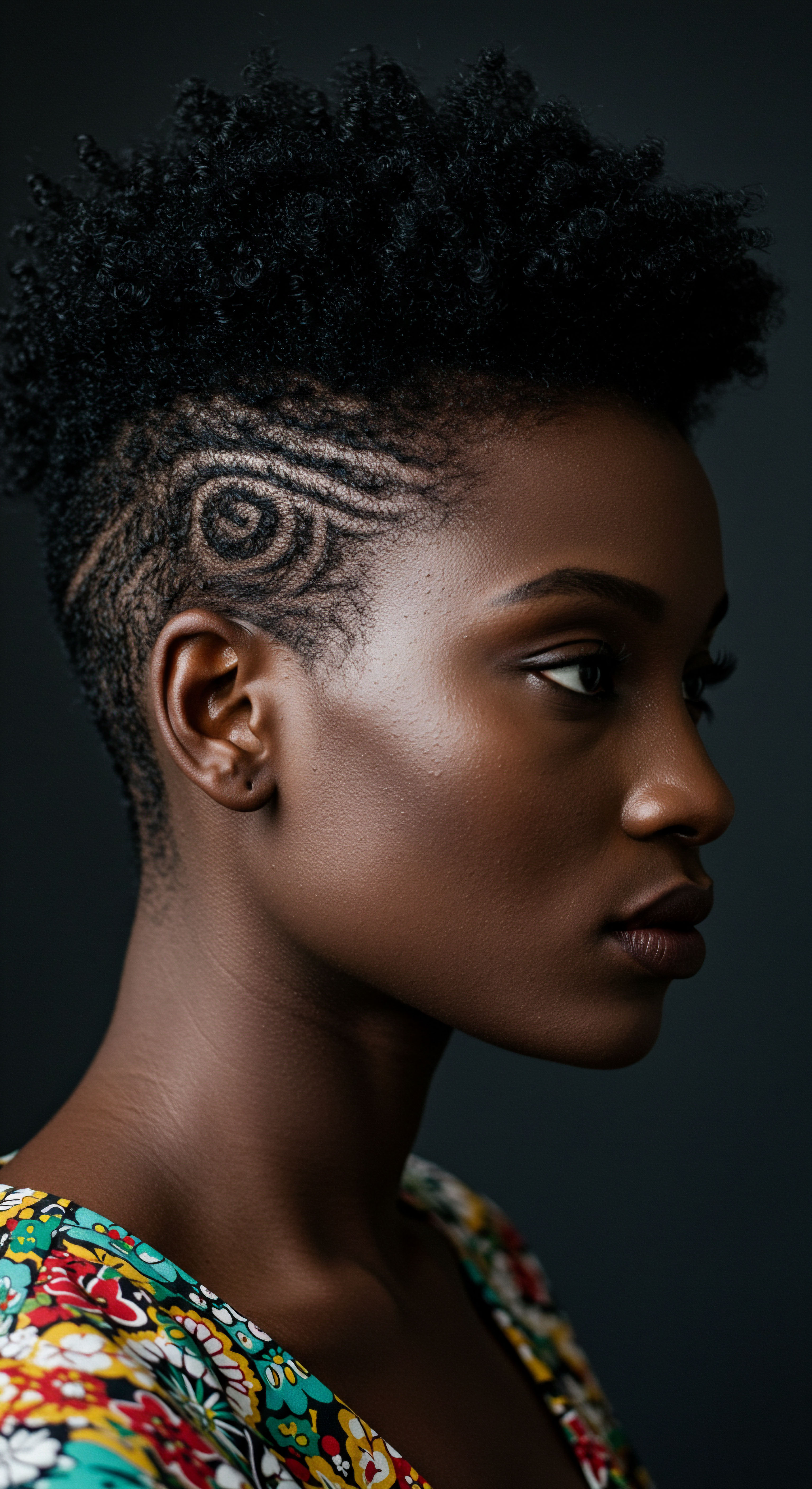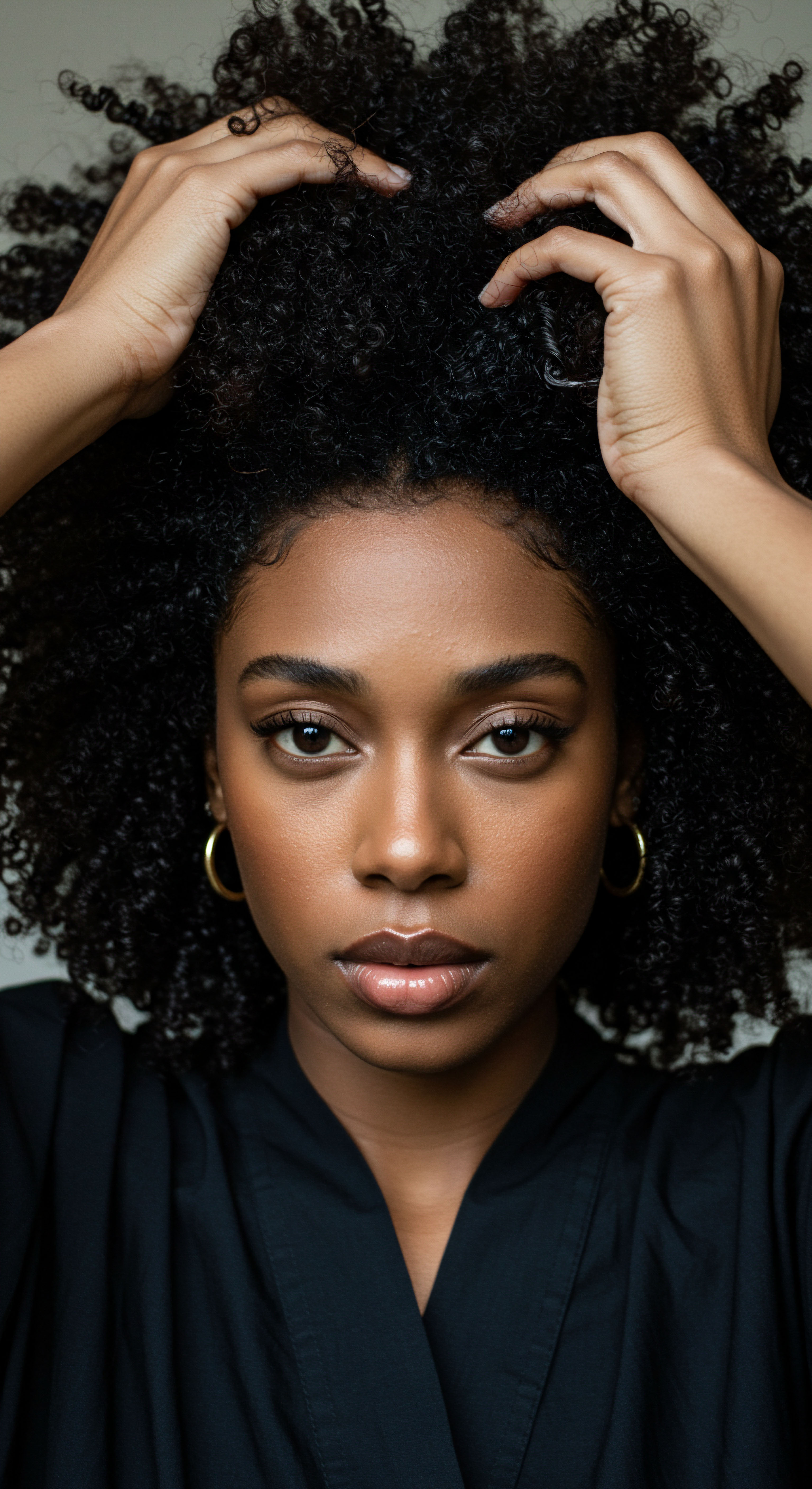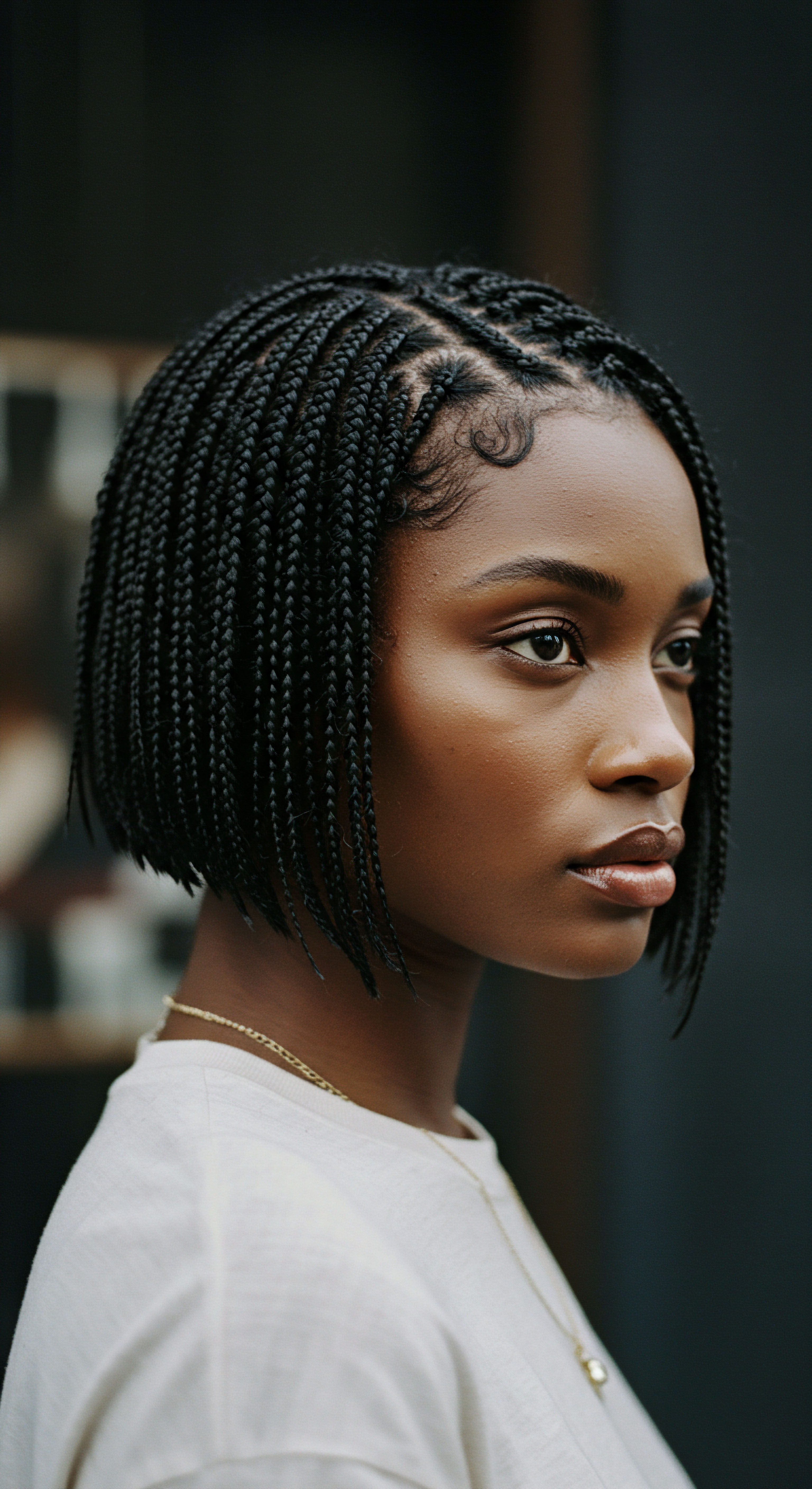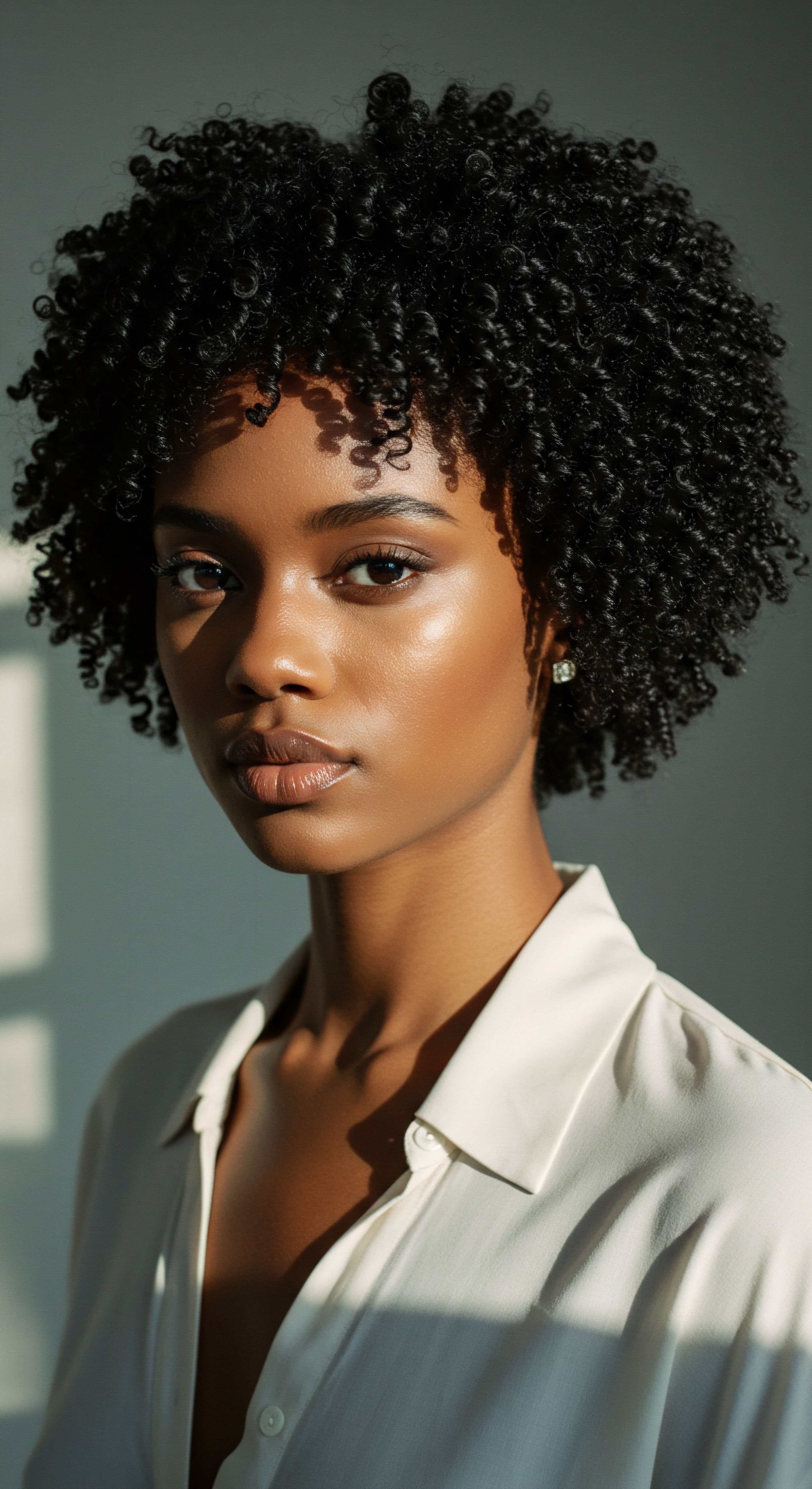
Roots
The story of African hair, a living crown, reaches back through generations, a testament to identity, spiritual connection, and social standing long before the arrival of foreign ships. It speaks of a deep reverence, where every braid, every coil, every intricate style communicated volumes ❉ age, marital status, tribal affiliation, even one’s readiness for battle. This was not mere adornment; it was a profound language, etched into the very strands of being. To understand the shifting landscape of African hair practices, one must first feel the quiet strength of this ancestral connection, a warmth that still lingers in the memory of fingertips through textured coils.
Before the shadows of colonial ambition lengthened across the continent, hair was an extension of the soul, meticulously cared for with natural emollients and tools crafted from the earth. Shea butter, various plant oils, and indigenous herbs nourished scalp and strand, fostering vitality. Hairstyles often marked significant life events, from rites of passage to mourning, serving as visual markers within tightly knit communities. These practices, deeply embedded in daily existence, mirrored the rhythm of life itself, a delicate balance of aesthetics, utility, and profound cultural meaning.

What Was the Symbolic Power of Pre-Colonial Hair Styles?
The symbolic power held within pre-colonial African hair styles extended far beyond simple aesthetics. Each plait, twist, or sculpted form served as a visual encyclopedia, transmitting complex information without uttering a single word. A particular style might signify mourning, a public declaration of grief and respect.
For example, among certain West African groups, specific braided patterns or shaved sections could denote a widow, guiding community members on how to interact with her during a period of sorrow and transition. Conversely, an elaborate, upward-sweeping style could signify a woman’s marital status and readiness for childbirth, a vibrant announcement of life and fertility.
Beyond personal identity, hair communicated societal roles and hierarchies. Chiefs and elders often bore styles of particular grandeur, their hair adorned with precious beads, cowrie shells, or gold, signifying their wisdom and authority. Young warriors might sport fierce, protective styles, perhaps hardened with clay, reflecting their strength and preparedness for conflict.
The communal act of hair styling itself held deep social significance, often taking place in gatherings where stories were shared, wisdom imparted, and bonds reinforced. These were not solitary acts but communal rituals, strengthening the social fabric.
Pre-colonial African hair practices were a vibrant, unspoken language, conveying identity, status, and spiritual connection.
The advent of colonial powers brought with it a stark and often brutal clash of worlds, extending even to the intimate realm of hair. European colonizers, steeped in their own beauty ideals, often viewed African hair as “primitive,” “unclean,” or “savage.” This perception was not benign; it served as a convenient justification for their civilizing mission, a way to dehumanize and subjugate. The very texture and versatility of African hair, once a source of pride and artistic expression, became a target for disdain. Policies, both explicit and implicit, began to dismantle these deeply rooted practices.
Missionaries, often preceding or accompanying colonial administrations, played a significant role in this cultural assault. They preached that traditional African hairstyles were pagan or uncivilized, urging converts to adopt straightened hair and European head coverings as a sign of their newfound faith and modernity. This subtle, yet pervasive, pressure to conform began to erode centuries of tradition.
For instance, a case study examining early 20th-century missionary records in parts of British West Africa reveals explicit directives for converts to abandon their customary elaborate hairstyles in favor of simpler, often covered, European-influenced looks, associating the former with ‘heathen’ practices. This direct intervention into personal appearance was a powerful tool of cultural control, designed to sever ties with indigenous ways of life and to instill a sense of inferiority regarding one’s natural form.
The colonial imposition of Western standards was not solely about aesthetics; it was a calculated strategy to dismantle African identity and communal structures. When individuals were compelled to reject their traditional hair, they were simultaneously encouraged to reject a part of their heritage, their community, and their very selfhood. This psychological assault laid the groundwork for generations of internalized self-doubt and a complex relationship with natural hair.
- Identity Erosion ❉ Colonial policies often linked traditional African hair to ‘primitiveness’, forcing a shift towards Eurocentric aesthetics.
- Cultural Disruption ❉ The communal acts of hair styling, vital for social cohesion, were discouraged or replaced.
- Economic Impact ❉ The introduction of new, often harmful, hair products created a market dependent on foreign goods.

Ritual
Stepping into the domain of hair care, one finds not just techniques but deeply personal rituals, shaping daily life. Colonial policies, however, cast long shadows over these intimate practices, transforming them from expressions of cultural pride into arenas of subtle coercion. The very act of caring for one’s hair, once a moment of connection to ancestry and community, began to morph under the weight of imposed ideals. This section explores how these policies seeped into the practical, day-to-day choices regarding hair, prompting a reevaluation of what was considered beautiful, acceptable, or even professional.
The most visible manifestation of this impact arrived with the introduction and widespread adoption of chemical straighteners and hot combs. These tools, foreign to traditional African hair practices, promised a sleek, straightened look that mirrored European beauty standards. While initially marketed as symbols of modernity and sophistication, their usage carried significant implications.
The chemical relaxer, in particular, became a pervasive force, offering a permanent alteration to the hair’s natural curl pattern. This was not a neutral offering; it was often presented as a key to social mobility, to acceptance in colonial institutions, and to escaping the pervasive stigma attached to natural, textured hair.

How Did Chemical Straighteners Alter Hair Care?
The advent of chemical straighteners fundamentally altered the landscape of African hair care. These potent formulations, designed to break down the hair’s disulfide bonds, offered a dramatic departure from the natural coil. This transformation, while providing a pathway to conformity, often came at a cost.
Scalp burns, hair breakage, and long-term damage became unfortunate companions to the pursuit of straightened strands. The ritual of hair care shifted from nourishing and celebrating natural texture to chemically altering it, often in painful and damaging ways.
The demand for these products created a new economic reality. Where once indigenous oils and butters were sufficient, now a burgeoning market for imported chemicals and styling tools took hold. This shift redirected resources and consumer choices, subtly binding African economies to colonial trade networks. The hair salon, once a community hub for traditional styling, slowly began to transform into a space where chemical processes became central, further embedding the new aesthetic into the fabric of daily life.
Colonial pressures introduced chemical straighteners, shifting hair care from natural nourishment to potentially damaging alteration.
Beyond chemical processes, the colonial era also saw the imposition of dress codes and appearance standards in schools, workplaces, and public spaces. These regulations, often unwritten but powerfully enforced, implicitly or explicitly discouraged traditional African hairstyles. Children attending mission schools, for instance, were frequently required to keep their hair “neat” and “tidy,” terms that often translated to straightened or severely cropped styles. This systematic conditioning from a young age ingrained the idea that natural African hair was somehow disorderly or unprofessional, a notion that persisted for generations.
The consequence was a profound internal struggle for many. The desire for acceptance, for educational opportunities, or for professional advancement often meant suppressing one’s natural hair identity. This suppression was not a simple aesthetic choice; it was a daily negotiation with a colonial legacy that sought to diminish cultural pride. The traditional tools and techniques, once passed down through families, began to wane in prominence, replaced by new rituals centered on alteration rather than affirmation.
| Aspect Styling Methods |
| Pre-Colonial Practices Intricate braiding, twisting, sculpting with natural materials, thread wrapping. |
| Colonial Influences Chemical relaxing, hot combing, simple buns, European-style cuts. |
| Aspect Care Products |
| Pre-Colonial Practices Shea butter, coconut oil, indigenous plant extracts, natural clays. |
| Colonial Influences Lye-based relaxers, petroleum jelly, commercial pomades, imported conditioners. |
| Aspect Symbolism |
| Pre-Colonial Practices Identity, status, spirituality, age, marital status, tribal affiliation. |
| Colonial Influences Conformity, modernity, social acceptance, perceived professionalism. |
| Aspect Social Context |
| Pre-Colonial Practices Communal gatherings, intergenerational teaching, cultural celebration. |
| Colonial Influences Individualistic pursuit of European aesthetic, salon culture, institutional pressure. |
| Aspect The shift reflects a profound cultural reorientation under colonial rule. |

Relay
To truly grasp the enduring consequences of colonial policies on African hair practices, one must look beyond the surface, recognizing the deep currents of influence that continue to shape perceptions and experiences today. How did the imposed ideals of yesteryear transmit through generations, affecting not only individual self-perception but also broader societal structures and economic landscapes? This exploration ventures into the subtle yet persistent echoes of a past that reshaped beauty standards and, by extension, self-acceptance across the African diaspora.
The economic repercussions of colonial hair policies extended far beyond individual choices. The market for hair products in post-colonial nations and diaspora communities became heavily skewed towards chemical straighteners and European-style hair care items. This created a lucrative industry, often dominated by multinational corporations, that benefited from the internalized desire for conformity.
Local industries that might have capitalized on traditional, natural hair care methods were often sidelined or underdeveloped. The financial outflow associated with importing these products represented a drain on local economies, diverting resources that could have supported indigenous enterprises.

What Lasting Economic Shifts Occurred in Hair Care?
The economic shifts in hair care, catalyzed by colonial policies, created a persistent dependence on imported products and a devaluing of local resources. Consider the substantial market for chemical relaxers in countries with large populations of African descent. A study from 2017 indicated that the global Black hair care market was valued at over $2.5 billion, with a significant portion historically dedicated to relaxers and other chemical treatments, often produced by non-African companies. This economic structure, established during colonial times, continued to siphon wealth from communities, reinforcing a cycle where the pursuit of an imposed beauty ideal directly benefited external entities.
Conversely, the recent surge in the natural hair movement has begun to reverse some of these economic trends, fostering a growth in local, Black-owned businesses that produce products tailored to textured hair. This shift represents a powerful act of economic decolonization, redirecting wealth and expertise back into communities that were historically exploited.
Colonial policies created a lasting economic reliance on foreign hair products, often at the expense of local industries.
Beyond economics, the psychological and social impacts are perhaps the most profound and enduring. Generations grew up internalizing the message that their natural hair was somehow inferior, leading to widespread self-consciousness and even self-hatred. This internalized oppression manifested in various ways ❉
- Discrimination in Institutions ❉ Natural hair, particularly dreadlocks or elaborate braids, was often deemed “unprofessional” in schools and workplaces, leading to exclusionary practices.
- Social Stigma ❉ Individuals with natural hair might face negative comments or social pressure to conform to straightened styles, affecting self-esteem.
- Identity Crisis ❉ For some, the pressure to conform created a disconnect from their cultural heritage and an ongoing struggle with self-acceptance.
The natural hair movement, which gained significant momentum in the early 21st century, stands as a powerful counter-response to this colonial legacy. It represents a collective awakening, a reclamation of identity, and a celebration of the inherent beauty and versatility of textured hair. This movement is not merely about hair; it is a profound act of decolonization, challenging centuries of imposed beauty standards and asserting the validity and splendor of African aesthetics. It is a movement that encourages individuals to reconnect with their roots, both literally and figuratively, fostering a sense of pride and cultural affirmation that was systematically suppressed.
This reclamation extends to the revival of traditional styling techniques and the rediscovery of indigenous ingredients. Online communities and social media platforms have played a significant role in disseminating knowledge, sharing experiences, and building a global network of support for those on their natural hair journeys. This digital connectivity has provided a space for learning and healing, bypassing traditional media channels that historically perpetuated Eurocentric ideals. The collective affirmation found within these spaces provides a powerful antidote to the isolation and self-doubt that colonial policies sought to instill.
The ripple effect of this cultural shift extends to policy changes, such as the CROWN Act in the United States, which prohibits discrimination based on hair texture or protective styles associated with race. Such legislative efforts signify a growing societal recognition of the historical injustices perpetuated by hair discrimination and a commitment to dismantling its ongoing effects. These legal protections represent a tangible step towards a future where hair is no longer a barrier to opportunity or a source of prejudice, but simply another aspect of diverse human expression.

Reflection
The journey through the impact of colonial policies on African hair practices reveals a landscape of both profound loss and enduring resilience. What began as a systematic attempt to dismantle cultural identity has, over time, given rise to a powerful movement of reclamation and self-love. The strands of African hair, once targets of suppression, now stand as vibrant symbols of heritage, strength, and a beautiful, unapologetic return to self. The quiet revolution continues, one curl, one coil, one confident stride at a time, reminding us that true beauty springs from authenticity.

References
- Byrd, Ayana D, and Lori L Tharps. Hair Story Untangling the Roots of Black Hair in America. St. Martin’s Press, 2001.
- Akerele, G. The Socio-Cultural Impact of Hair Relaxers on African Women. Journal of Black Studies, 2017.
- White, Shane, and Graham White. Stylin’ African American Expressive Culture From Its Beginnings to the Zoot Suit. Cornell University Press, 1998.
- Mercer, Kobena. Welcome to the Jungle New Positions in Black Cultural Studies. Routledge, 1994.
- Banks, Ingrid. Hair Matters Beauty, Power, and Black Women’s Consciousness. New York University Press, 2000.
- Patton, Tracey Owens. African American Hair and Beauty Culture A Critical Reader. Duke University Press, 2013.
- Caldwell, Paulette. A Hair Piece A Legal and Cultural Study of Race and Gender. Duke University Press, 2000.
- Rooks, Noliwe M. Hair Raising African American Women Their Hair, and Earthly Adornments. Rutgers University Press, 1996.